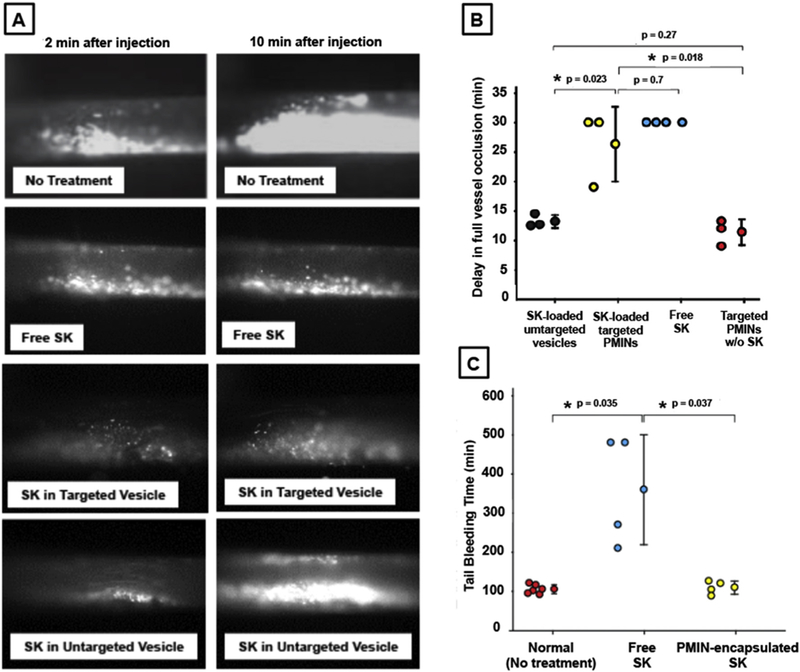Fig. 7.

[A] Representative intravital microscopy images (2 min and 10 min time point post treatment injection) of Rhodamine G-labeled platelet-rich thrombi (FeCl3-induced) within mouse carotid after intravenous (through jugular) administration of free SK or SK-loaded targeted PMIN vesicles or SK-loaded unmodified (untargeted) vesicles or no treatment, shows that without any treatment the artery is significantly occluded within 10 min, free SK treatment keeps the artery significantly open due to persistent thrombolysis, treatment with SK-loaded targeted PMINs shows similar thrombolytic effect as free SK, and treatment with SK-loaded untargeted vesicles have much reduced thrombolytic effect; [B] Quantitative results of delay in vessel occlusion emphasizes the fact that SK-loaded targeted PMINs can delay vessel occlusion with an efficacy close to that of free SK, targeted PMINs without SK cannot effectively delay vessel occlusion, and SK-loaded untargeted vesicles are unable to delay vessel occlusion to the level of SK-loaded targeted PMINs; [C] Tail bleeding studies on mouse injected with free SK versus SK-loaded PMINs show that free SK have systemic off-target effect on hemostatic capability (tail bleeding time increased significantly compared to normal ‘no treatment’ mice) while PMIN-encapsulated SK does not have such drastic effect.
